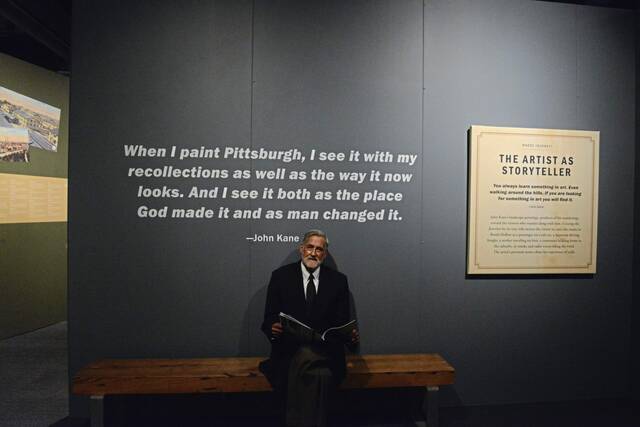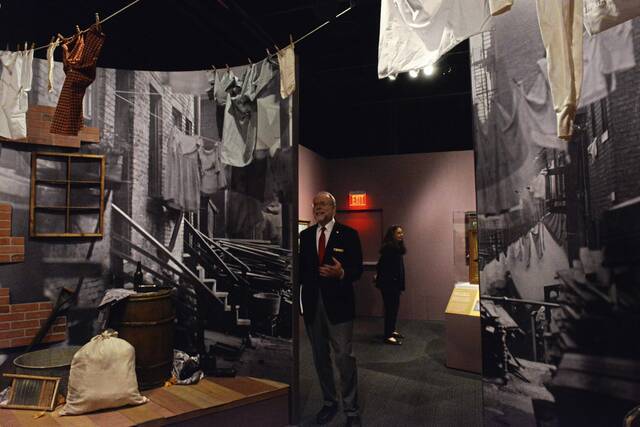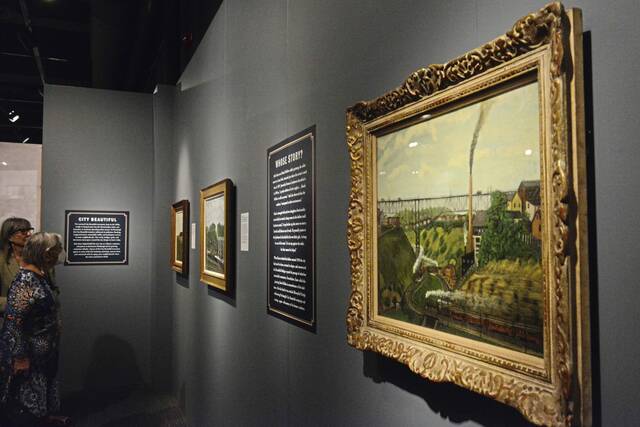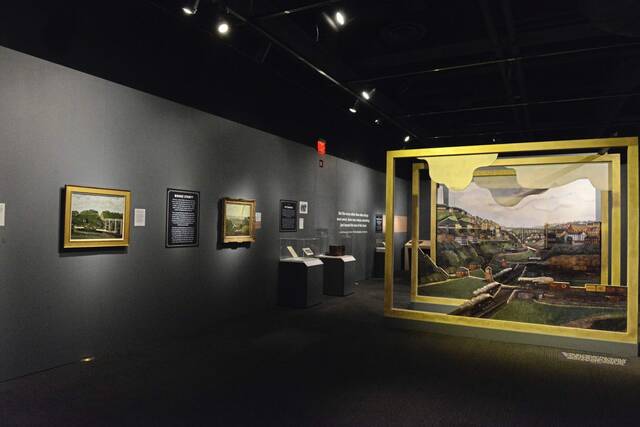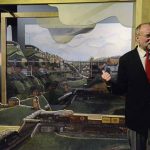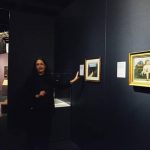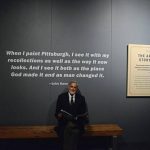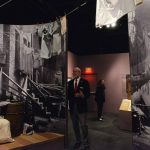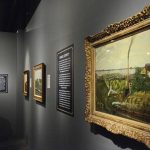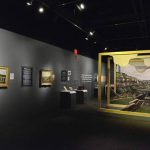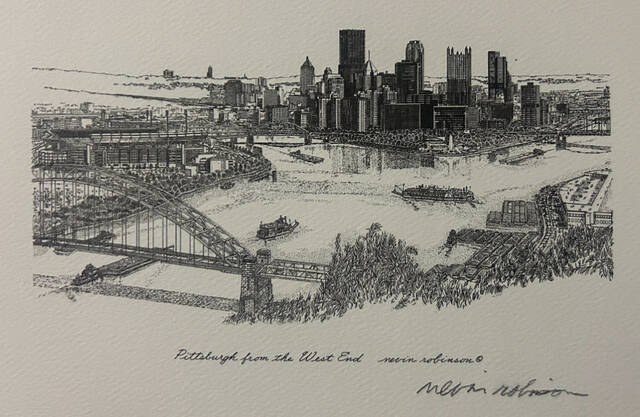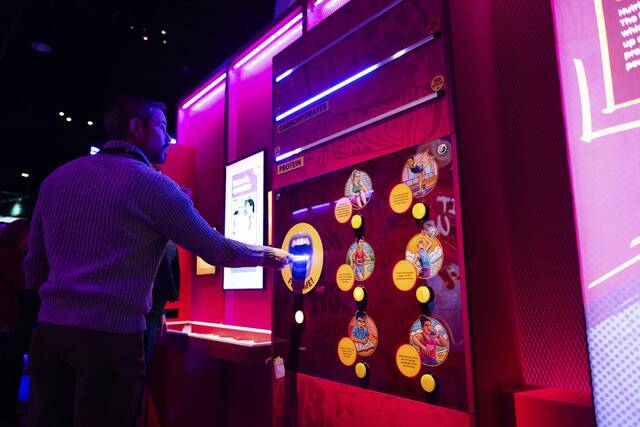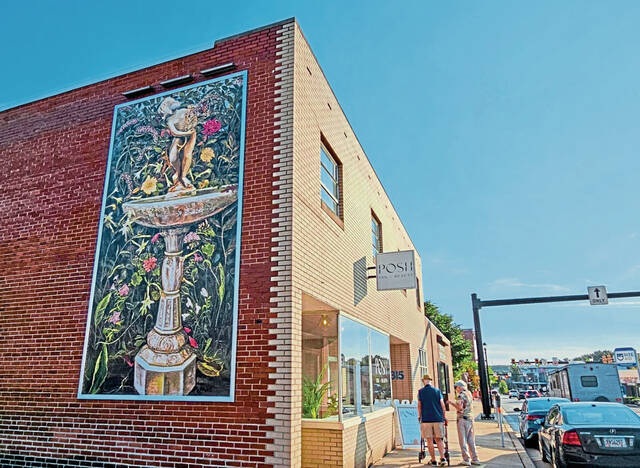John Kane was a boxer, and that training was instrumental in having to bounce back many times in his life.
His story of rebounding from hardships is being shared at the Senator John Heinz History Center in the Strip District.
“Pittsburgh’s John Kane: The Life & Art of an American Workman,” opens on Saturday.
The exhibition explores the story of Kane, a Pittsburgh immigrant who endured poverty, tragedy and other adversities to become one of the world’s most revered self-taught artists.
There are 37 original works of art and rare artifacts telling the story of Kane, who came to the U.S. at the turn of the century as a 19-year-old Scottish immigrant.
It will be on display through Jan. 8.
“His boxing mentality comes through in this exhibit,” said Andy Masich, president and CEO of the History Center at a media preview on Thursday. “John Kane would get knocked down, and he would pick himself back up.”
Kane’s family settled in Braddock, where he worked for a short time. He then had several jobs, including one working for the railroad. After having his left leg severed in a rail yard accident, Kane reinvented himself as a painter. He still boxed with a prosthetic leg.
He fell in love with art as a child. He learned more about art after losing his leg and working on the railroad painting steel box cars.
Sometimes he would paint images of people on the sides of the cars during his lunch hour. His boss said that was OK as long as he painted over them.
Kane vied to have his art part of the Carnegie International. Established in 1896, the Carnegie International is the longest-running North American exhibition of international art. It’s held at the Carnegie Museum of Art in Oakland.
Kane was rejected twice before earning a spot in 1927.
“John Kane was a guy who would get back in the ring, even with a prosthetic leg,” Masich said. “He continued to apply for the Carnegie International. That showed what a competitive guy he was.”
There is artwork from 27 lenders, including The Metropolitan Museum of Art, the Smithsonian’s Hirshhorn Museum and Sculpture Garden, Carnegie Museum of Art, American Folk Art Museum, Detroit Institute of Arts, the Phillips Collection, and other private collections.
Some pieces have never been seen before — or at least not in several decades.
“John Kane’s extraordinary paintings have hung in art galleries around the world, but this is the first exhibition to comprehensively examine his remarkable life,” Masich said. “Kane’s come-from-behind story embodies the work ethic and can-do spirit that built Pittsburgh. It’s the kind of story that Pittsburghers love.”
After immigrating to Braddock in 1880, Kane spent most of his life as thousands of workmen did, grinding away at low-paying jobs — mostly as a commercial painter of rail cars, houses and buildings — to make ends meet. He battled alcoholism and mental illness.
“His story is emblematic of so many who came here and worked and lived in an industrial city,” said Anne Madarasz, director of the curatorial division and chief historian as well as director of the Western Pennsylvania Sports Museum. “His art and his words survived so we can tell his story.”
Madarasz said she believes the story is one that will resonate with people.
“John Kane wanted his work to be fulfilling like all of us do,” she said.
Without any formal training, Kane used his spare time to paint scenes of Pittsburgh, including a 1929 painting of the Strip District, one of Masich’s favorites.
Throughout the exhibit, there is a recreated boxcar, like the railroad cars Kane worked on as the lead painter for the Pressed Steel Car Co.
Kane’s tin whistle and flute is also part of the exhibit. He began playing music as a child. There is a watercolor wheel from the American Folk Art Museum that acted as Kane’s personal palette and never-before-seen photographs and archival pieces.
There are also 12 pieces of art by Kane’s contemporaries.
Some of Kane’s paintings were inspired by photos — Kane purchased a camera in 1928 and there are pictures with his fingerprints on them.
His final painting, “Crossing the Junction,” is unfinished. He knew he was near death and he painted it in 1933 for the 1934 Carnegie International. The scene is Skunk Hollow, an area between Bloomfield and Polish Hill.
The focus is on four trains converging on a central junction, suggesting the four Kane brothers — killed or maimed by trains.
One train represents him losing his leg, another his brother losing an arm and two brothers who were killed by trains.
“It’s a tragic piece,” said Louise Lippincott, a guest curator who co-wrote a book about Kane with Maxwell King “American Workman: The Life and Art of John Kane,” recently published by the University of Pittsburgh Press.
King, a Ligonier resident who is the former head of the Heinz Endowments and Pittsburgh Foundation, is also the author of the “The Good Neighbor: The Life and Work of Fred Rogers.” Lippincott is a former curator of fine arts at the Carnegie Museum of Art, where she managed its Kane collection.
The exhibit coincides with the book launch.
The History Center created a four-part display of Kane’s final painting, where guests can walk through the landscape created by Kane. The painting is dissected into four parts to show each piece of the artwork.
The idea to create the large display was that of Samantha Baine, exhibit designer at the history center.
“This was challenging,” she said. “It’s a different way to view a painting. We want people to walk through it and experience it.”




